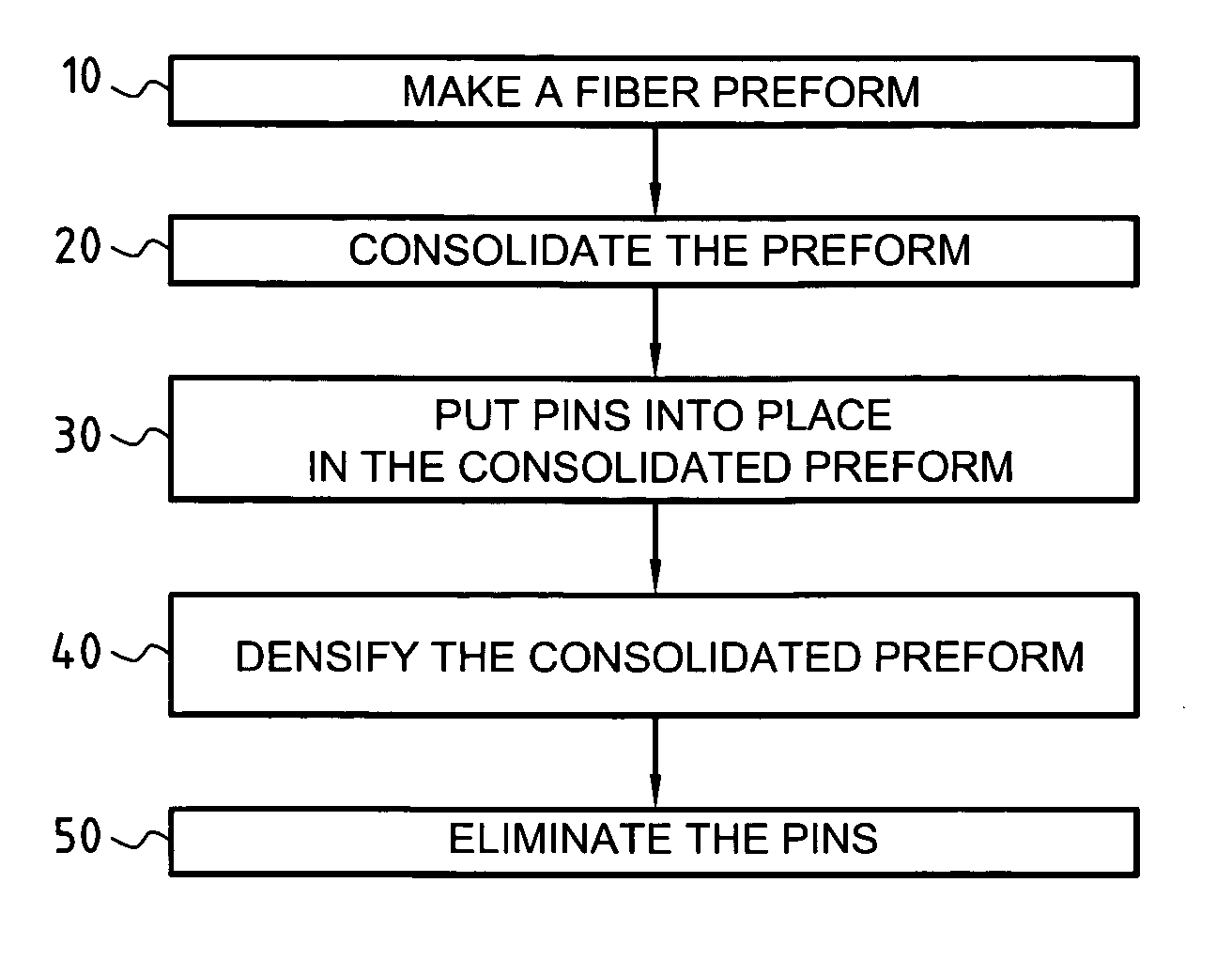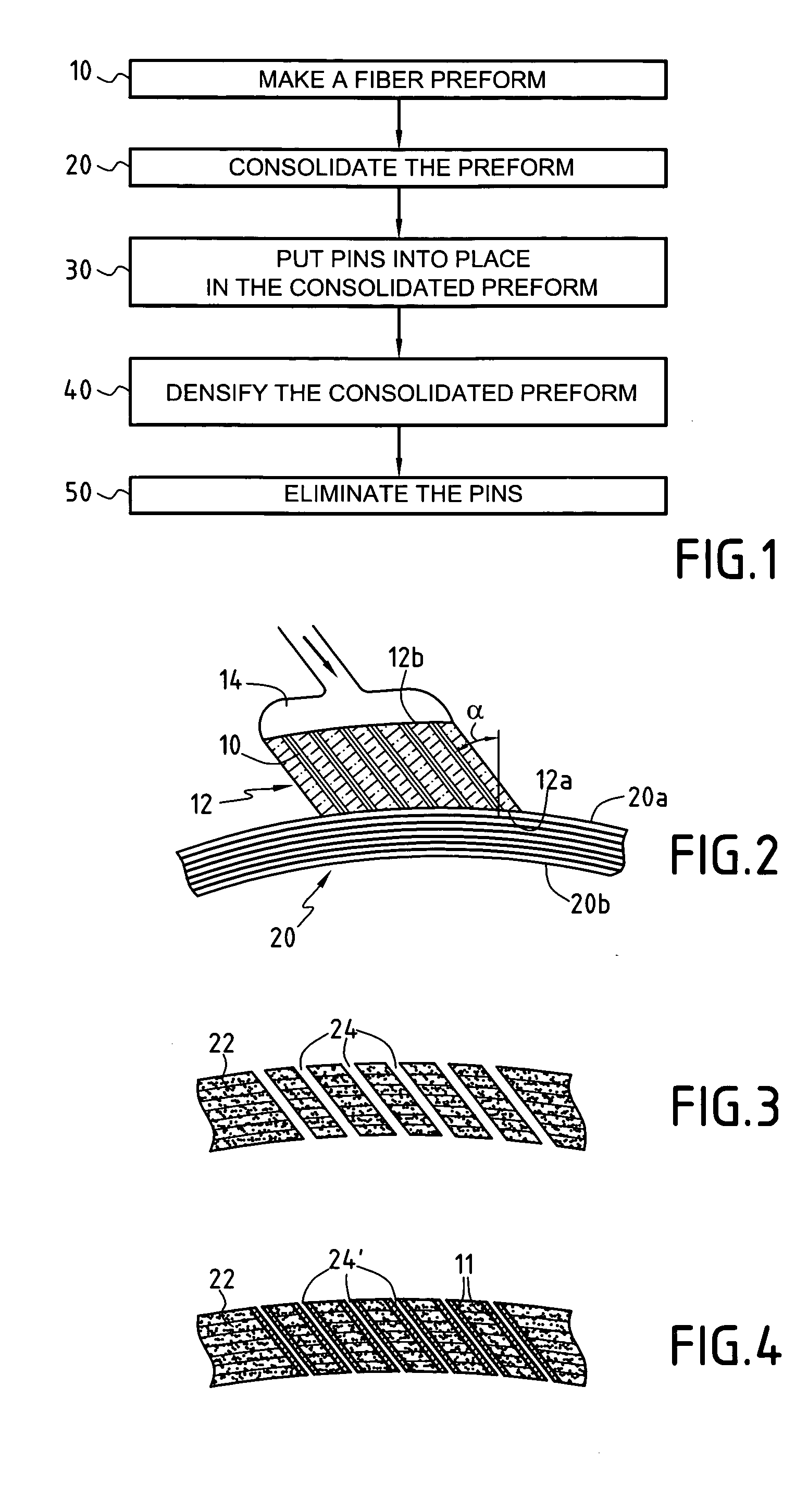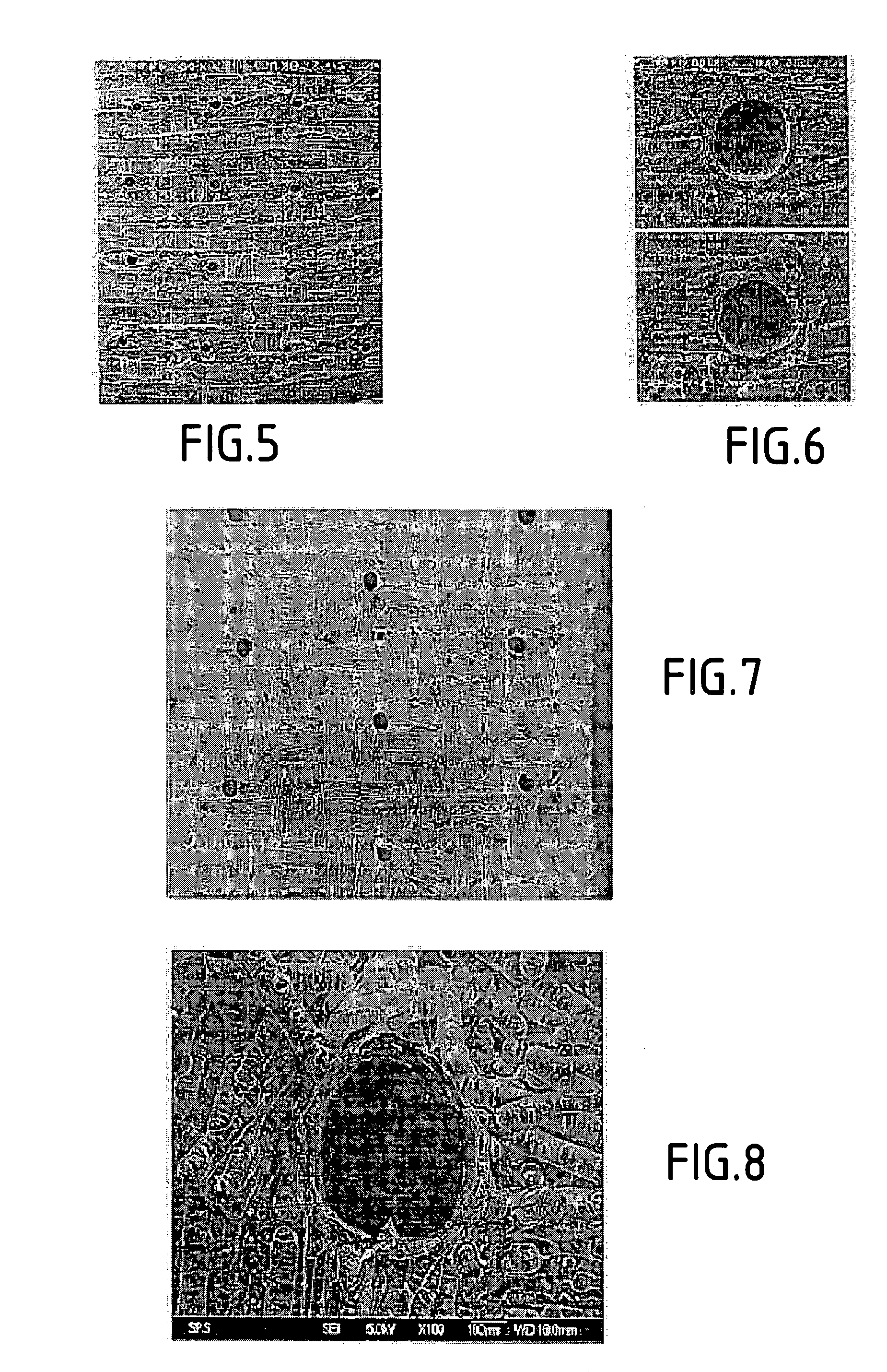Method of making a multi-perforated part out of ceramic matrix composite material
a composite material and multi-perforation technology, applied in the field of ceramic matrix composite material multi-perforation part making, can solve the problems of reducing the effectiveness of air injection through the perforation, destroying the reinforcing fiber, and destroying the fibers,
- Summary
- Abstract
- Description
- Claims
- Application Information
AI Technical Summary
Benefits of technology
Problems solved by technology
Method used
Image
Examples
example 1
[0064] A fiber preform was made by multilayer weaving of SiC fiber yarns supplied under the reference "Hi-Nicalon" by the Japanese supplier Nippon Carbon, the preform comprising ten layers. The pore volume fraction of the preform was approximately equal to 65%.
[0065] The preform was consolidated by forming a PyC interphase and depositing SiC by chemical vapor infiltration, with the pore volume fraction being reduced to a value of about 55%.
[0066] After consolidation, pins having a diameter of 0.3 mm were put into place, the pins being made of carbon yarns stiffened by being impregnated with a BMI resin. The pins were put into place normally to the multilayer fiber fabric, and they were of a length such as to project from both sides of the preform.
[0067] The preform was subsequently densified by a self-healing ceramic matrix of the Si--B--C type, as described in U.S. Pat. No. 5,246,736.
[0068] After densification, the projecting ends of the pins were eroded so as to lay their carbon b...
example 2
[0070] A fiber preform was made by multilayer weaving of carbon fiber yarns, the preform comprising five layers. The volume fraction of the pores of the preform was approximately equal to 60%.
[0071] The preform was consolidated by depositing SiC by chemical vapor infiltration with the volume fraction of the pores being reduced to a value of about 50%.
[0072] After consolidation, 0.3 mm diameter pins were put into place in the preform, the pins being formed by carbon yarns stiffened by being impregnated with a BMI resin. The pins were put implanted at an angle of 45.degree. relative to the normal at the surface of the preform. The pins were long enough to project from both sides of the preform.
[0073] The preform was densified and the pins were then eliminated as in Example 1. The resulting perforations are shown in the photographs of FIGS. 7 and 8.
PUM
| Property | Measurement | Unit |
|---|---|---|
| diameter | aaaaa | aaaaa |
| pressure | aaaaa | aaaaa |
| temperature | aaaaa | aaaaa |
Abstract
Description
Claims
Application Information
 Login to View More
Login to View More - R&D
- Intellectual Property
- Life Sciences
- Materials
- Tech Scout
- Unparalleled Data Quality
- Higher Quality Content
- 60% Fewer Hallucinations
Browse by: Latest US Patents, China's latest patents, Technical Efficacy Thesaurus, Application Domain, Technology Topic, Popular Technical Reports.
© 2025 PatSnap. All rights reserved.Legal|Privacy policy|Modern Slavery Act Transparency Statement|Sitemap|About US| Contact US: help@patsnap.com



